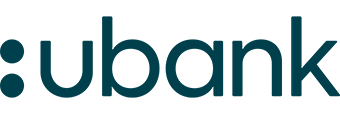Consolidating existing debts is a common reason for Aussies to refinance their mortgage. From credit cards to personal loans, it can be easy to rack up multiple sources of debt. If you've got a home loan, rolling other debts into your mortgage can make repayments easier to manage, not to mention potentially saving you on interest.
Debt consolidation home loans
Debt consolidation home loans involve packaging all of your existing debts (credit cards, car loans, personal loans etc.) into your mortgage. Basically, you refinance your home loan, borrowing additional money that you use to pay off everything else. Instead of paying lots of separate loans simultaneously, you are just making one fortnightly/weekly/monthly mortgage repayment.
This can also mean you drastically reduce your bills. Let's take a look at how this works:
Con Solidaté has a home loan, a car loan and a credit card bill, all of which are quickly adding up.
|
Debt |
Amount outstanding |
Minimum Monthly repayments |
|---|---|---|
|
Home Loan (7% p.a) |
$300,000 |
$2,474 |
|
Credit card (17% p.a) |
$5,000 |
$125 (at 2.5% of the balance) |
|
3-Year Car loan (8% p.a) |
$10,000 |
$313 |
|
Total |
$315,000 |
$2,912 |
Given that Con's monthly pay is $4,734 after tax ($70,000 gross salary), his total debt repayments account for over half of that. When he factors in his utility bills, groceries and other costs like transport, he doesn't have much left to save.
Con speaks to his lender about refinancing his home loan to consolidate his debts. He's five years into his 25-year $350,000 mortgage, with $300,000 remaining. Since he has a strong equity position (with an LVR of under 80%), his lender agrees to add the $15,000 of credit card and car loan debt to his mortgage and allows him to refinance to a $315,000 25-year mortgage at the same interest rate of 7% p.a. His monthly repayments now look like this:
|
Debt type |
Amount owed |
Monthly repayments |
|---|---|---|
|
Debt Consolidated Mortgage (7% interest rate) |
$315,000 |
$2,226 |
Under this new debt consolidation loan, Con's monthly repayments have now been reduced by $686 to $2,226, giving him some much-needed wiggle room at the end of every month.
The trade-off is that he will be paying off his home loan for longer, given his loan term was extended by five years.
Consolidating debts into mortgage
What you'll need
There are a couple of things you'll need if you want to pursue a debt consolidation home loan:
Equity
In order to top up your existing home loan into a new one that allows you to consolidate your debts, you will need to have some built up equity in the property.
Because of the extra risk you may present, lenders will look to the value of the property to determine your equity, and they'll usually allow you to borrow up to 80% of the value of the property. The more of your mortgage you've paid off already, the higher your chances of being approved for a favourable new loan.
Borrowing power
If you want to top up your home loan, your lender might need to assess your financial situation again. Just like when you initially borrowed, you might need to show your expenses, as well as your income, to demonstrate you will be able to keep paying the loan.
How to consolidate debts into your mortgage
Refinancing might seem complicated, but it's a pretty simple concept: you either change to a different loan with your existing loan provider or switch to a new provider with more favourable terms. If your current lender lets you, you can just top up your existing loan. In the event they aren't willing, you could try contacting other lenders. The home loan market tends to be pretty competitive, and there is no shortage of options out there that could have better interest rates, fees, features and lending conditions than what you might have now.
You can use Savings.com.au's home loan repayments calculator to calculate mortgage repayments and compare the total costs of different loans. This can help you decide whether or not it's worth refinancing.
Buying a home or looking to refinance? The table below features home loans with some of the lowest interest rates on the market for owner occupiers.
| Lender | Home Loan | Interest Rate | Comparison Rate* | Monthly Repayment | Repayment type | Rate Type | Offset | Redraw | Ongoing Fees | Upfront Fees | Max LVR | Lump Sum Repayment | Extra Repayments | Split Loan Option | Tags | Features | Link | Compare | Promoted Product | Disclosure |
|---|---|---|---|---|---|---|---|---|---|---|---|---|---|---|---|---|---|---|---|---|
5.54% p.a. | 5.58% p.a. | $2,852 | Principal & Interest | Variable | $0 | $530 | 90% |
| Promoted | Disclosure | ||||||||||
5.49% p.a. | 5.40% p.a. | $2,836 | Principal & Interest | Variable | $0 | $0 | 80% |
| Promoted | Disclosure | ||||||||||
5.64% p.a. | 5.89% p.a. | $2,883 | Principal & Interest | Variable | $250 | $250 | 60% |
| Promoted | Disclosure | ||||||||||
5.64% p.a. | 5.89% p.a. | $2,883 | Principal & Interest | Variable | $248 | $350 | 60% |
| Disclosure |
Advantages of consolidating your debts
Refinancing your home loan to consolidate your debts can save you money and it can also be much easier with just one loan to repay. Paying three, four or five different lenders can mean more paperwork, more time and more stress, so cutting these extra stakeholders out can make it easier to sort out your finances. When your home loan rate is lower than the rate on your other products (as is typically the case) you can also save on your interest bill each month.
Disadvantages of debt consolidation
This strategy definitely isn't foolproof. Perhaps the biggest drawback to consolidating smaller debts into your mortgage is that you're stretching these short-term debts over a much longer term. While the interest rate on the mortgage may be significantly lower than the rates on the credit card or car loan, the interest will be accruing over a much longer period.
You should also take into account the upfront costs of refinancing. This includes, among other things, the break costs on your current loans, which can be thousands. If you're struggling with debt, chances are you might not be able to afford these costs.
Alternatives to debt consolidation home loans
If you're unable to top up your home loan, or don't even have one, there are a couple of other strategies experts suggest if you're facing overwhelming debts.
The 'snowball' method
Many money experts around the world advocate for the 'snowball' or 'domino' method of focusing on paying off debts one at a time, starting with the smallest debt. You make minimum repayments on all of your other loans while putting all you can into paying off your smallest debt. Once that's paid off, you move on to the next smallest and keep on going until you're debt free. This method plays into psychology - the borrower gains more confidence in their debt-repayment abilities after the "quick wins" of paying off the smaller debts, motivating them to tackle the bigger debts.
The 'avalanche' method
The avalanche method involves paying off the debts with the highest interest rates first. This is pretty similar to the 'snowball' method given smaller debts (e.g. credit cards) tend to have higher interest rates than larger debts (e.g. home loans).
Get help
If things have taken a turn for the worse, you can call the National Debt Helpline on 1800 007 007 to talk through what your options are. The Debt Hotline is free and confidential, and you can discuss your situation with a financial counsellor who will be able to outline your options.
Savings.com.au's two cents
Debt consolidation can make it easier to manage your debts, but it isn't a get out of jail free card. If you roll your debts into your home loan and then keep borrowing irresponsibly, you might end up exactly where you started. You might need to look at your spending behaviour and work out how you ended up in your current predicament, as well as what you can do to prevent it from happening again.
Something to also be aware of is that some lenders might try to charge you a higher interest rate when refinancing. This might be because all of your extra debts make you appear to be a higher risk, but choosing such a loan could be disastrous. A loan with a rate that is even a few basis points higher could cost you thousands of extra dollars by the end of the term. Make sure you also find out what the refinancing costs will be and what other ongoing fees might apply.
Article initially published by William Jolly.
First published on August 2018
Picture by Sammie Chaffin on Unsplash
Disclaimers
The entire market was not considered in selecting the above products. Rather, a cut-down portion of the market has been considered. Some providers' products may not be available in all states. To be considered, the product and rate must be clearly published on the product provider's web site. Savings.com.au, yourmortgage.com.au, yourinvestmentpropertymag.com.au, and Performance Drive are part of the Savings Media group. In the interests of full disclosure, the Savings Media Group are associated with the Firstmac Group. To read about how Savings Media Group manages potential conflicts of interest, along with how we get paid, please click through onto the web site links.

Ready, Set, Buy!
Learn everything you need to know about buying property – from choosing the right property and home loan, to the purchasing process, tips to save money and more!
With bonus Q&A sheet and Crossword!







 Harry O'Sullivan
Harry O'Sullivan
 Bea Garcia
Bea Garcia
 Denise Raward
Denise Raward
 Aaron Bell
Aaron Bell


